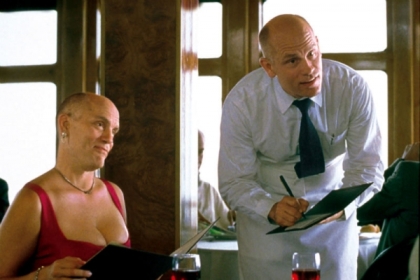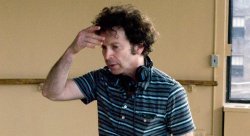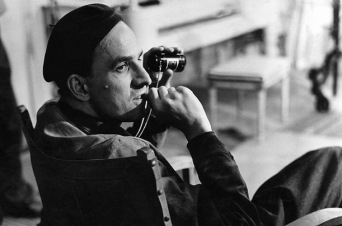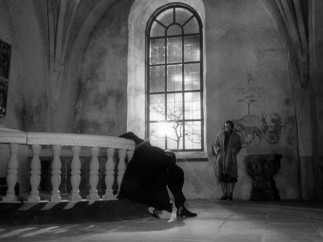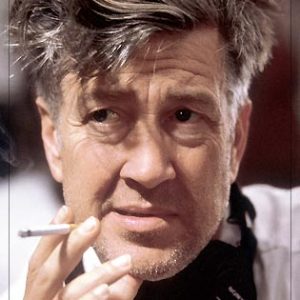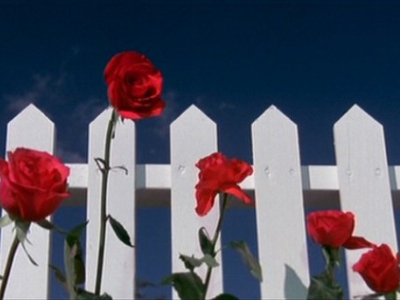As an aspiring filmmaker who happens to talk to other people who also want to make films, I ask, and have been asked, several times, exactly what movies made me want to make movies. A lot of people go for classics, their favourite movie (incidentally, as populist a choice as it may seem, mine is The Shawshank Redemption) and such. But I guess my list is a little different to that, while it does of course contain films I rave about and adore, they may not be overly predictable, or at least, I hope there are a few surprises in there.
In the order in which I remember seeing them, here they are, the big five of inspirational movies for me.
Night of the Living Dead (1968, Dir. George Romero)

Ah, I do love a good horror movie. I always have really, it was my earliest cinematic obsession, and one of the first directors who’s work I became infatuated with was John Carpenter.
But obviously, this isn’t a Carpenter movie (although, don’t get me wrong, I’d gladly go on about Halloween or The Thing any day), it’s Romero’s zombie classic. I watched it on my laptop (I’d gotten my dad to buy me the DVD earlier that day, I guess I was around… 14 or 15) and I was blown away by it. Yeah, it’s got basically no budget and some of the performances are uneven, but I’ll be damned if it’s not brilliantly atmospheric, with a gut punch of an ending.
The inspiration of this movie though, goes beyond just how good it was (which is to say, very). Because I was trying to think of what to do after watching, I decided, because I basically never do these things, to thrown on the bonus features DVD. On that disc there was an interview, or a round-table discussion of some kind that included Romero, and I remember him saying something like “we did it because we wanted to make a movie”. That’s probably not the exact quote, but then, I haven’t seen that interview for a few years. But the point is, that quote from Romero is what made it ‘click’ for me, that, if I wanted, why didn’t I just write something and, somewhere down the line, try and get it made.
And from here, we go to…
Eraserhead (1977, Dir. David Lynch)

As some of you may know, I’m a little bit in love with Eraserhead and it’s director, David Lynch, so it’s only obvious that he’d have a big impact on me artistically.
I’m going to be rehashing some of what I said in my earlier piece here to give some context to it. I was talking to a friend online (who I don’t really talk to anymore, which is a shame), and I remember asking him for feedback on potential ideas I was having to write. I can even remember what the ideas were, there was a serial killer biopic (although I never decided on the person it’d be based on) wherein I’d also use interview footage and that kind of thing to create a sense of realism. I had a similar kind of idea for a war film, but it doesn’t focus on the war, it focuses on the impact of the war instead, as it happens, using news clips, political speeches, the whole thing would have centered around the ‘home front’. The thing these ideas both had in common was a sense of vérité about them (something that I loved about Night of the Living Dead). And while talking about these ideas, I remember asking this friend for some suggestions that were a little… ‘different’.
Among the films he recommended to me were Begotten, as well as a few films I still haven’t seen (Possession, The Reflecting Skin and a few others) as well of, of course, Eraserhead). He shot me a link to the first part of it on YouTube, and away I went.
I was floored by it, it’s dream logic, visuals, nightmarish atmosphere… Everything. As much as I liked the idea of using vérité in movies, Eraserhead made me think about absolutely leaping out of the box and giving the finger to convention. It essentially, lit a creative fire in me that was put there from Night of the Living Dead, the one that made think, I could do this, and replaced it with one that screamed, I must do this.
The Shining (1980, Dir. Stanley Kubrick)

Who doesn’t love a good Kubrick film? No one, that’s who. And in my humble opinion, his lose adaptation of one of the best Stephen King novels ever, is his own masterpiece, visually wonderful, anchored by a top form and utterly unhinged Jack Nicholson.
The Shining, to put it simply, is the first film that I ever considered to be a masterpiece, it grabbed me by the throat for the entirety of it’s running time, from it’s iconic scenes to it’s masterful tracking shots, and the atmosphere of that damn hotel, the entire thing is excellent, and actually provided a major influence (the deserted hotel, descents into madness and whatnot) on an idea I’ve been floating around in my head for ages, which is some kinda Shining, Lynch-esque noir thing.
I’ll end this entry with another question – how can you not be influenced by the first masterpiece that you ever saw? You can’t.
The Seventh Seal (1957, Dir. Ingmar Bergman)

My introduction to foreign cinema, and the genius that is Bergman (which is to say it’s the first time I saw a Bergman film, the first time his name was on my radar, I was reading an interview with a black metal band who compared one of their albums to a Bergman movie, citing the chess with death scene that appears in this very work of genius), The Seventh Seal shaped some of my, for want of a better term, ‘intellect’ as an artist. It made me consider, in a way that Eraserhead did, what you can do with film as a medium, and the kind of the stories that it can tell.
First of all, it has a personification of Death in it. Yes, it’s simple, but it’s the first thing I saw with something like that, and it made me think about what to do with concepts like that.
Essentially, what The Seventh Seal did for me, was open my eyes, my mind, my heart, however you wanna put it, to using cinema to ‘say something’, to talk about faith, and death. It showed me that, by writing, I can genuinely have a ‘voice’.
Black Swan (2010, Dir. Darren Aronofsky)

The only modern film to grace this list is Darren Aronofsky’s ballet based stroke of cinematic wonder, Black Swan. I’ve seen this film a fair few times, once on a laptop, once in the cinema, and a few times on DVD. It should be noted, that of all the films on the list, this is the only one I’ve ever seen in a cinema.
It showed me how the atmosphere of where you see it is almost as important as the atmosphere of the film itself, on a cinema screen, Nina’s mental collapse is so powerful and gripping. It sometimes feels almost metafictional, the way it uses Swan Lake to bolster it’s story, including the perhaps infamous transformation sequence near the end of the film.
It’s also one of the first films I remember being so encapsulated by a motif in a movie – in this case, mirrors. I was fascinated by it, there were so many reflections everywhere, and it was wonderfully ambiguous as to what, if anything, they meant – is it about Nina’s mental state, a reflection of herself compared to herself when she performs? Who knows?
Ambiguous and gripping with a wonderfully realized score and choreography, this piece of modern genius is, for me, what modern cinema should be – unique and interesting, a story that is well told and technically interesting. Since I’m going to one day be one of those ‘modern’ filmmakers, something like this, that shows what a great mind and modern filmmaking is capable of, is just what I needed to see.
I’d also like to add a couple of honorable mentions to the end of this list, starting with a film that is awful, and then following it up with one that’s better, and, in a way, perhaps a little more personal.
Kidulthood (2006, Dir. Menhaj Huda)
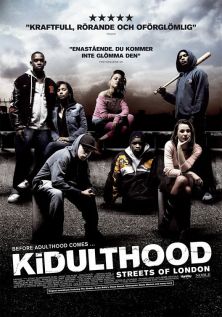
I fucking loathe this movie. It’s utterly dreadful. Everything about it, from the acting and writing to the woeful characters.
But of course, bad films can say a lot to an aspiring artist. There are, for me, two ways I can react to something bad. Number one – “if something that bad is getting made, surely I can make something.” Number two – “I will never make something that bad, if I do, I’ll hate myself creatively.”
Yes, the second one is perhaps a little angsty, but hey, it’s true. And by watching a film that bad, it made me realize I want everything I write to be good, to have something to say, to be unique. Where Black Swan is everything I want as a modern filmmaker, Kidulthood encapsulates so much that I hate.
And now for one last film (I know I said that I’d be writing about five, but I just feel like this one, and the above catastrophe, need to be mentioned)
Earrings (2012, Dir. Alex Withrow)

Yeah, I went there, a short film that I fear none of you have heard of, but all of you should watch. It was directed by a friend of mine, Alex, from And So It Begins…. While Alex and I haven’t met, I like to think we’re friends (I hope he does too, of course), I hold his cinematic opinion in high regard, and he’s a great guy.
But the point of this being here is, when a friend succeeds, you’re very happy for them. And, maybe a tiny bit jealous. He’d done it, he’d made a film that was unique, that showed his vision. Oh, and it was good. So, to see a friend succeed so well gave me the kick I needed to really focus on my writing whenever I had spare time to do so. And for that, I’d like to thank Alex.
So, who else out there wants to make movies? I’d love to hear what it was that lit the fire in all of you.




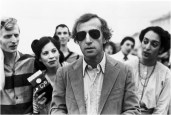


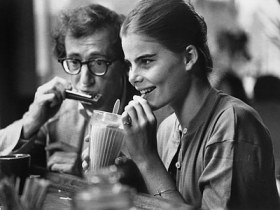

 If this image in particular doesn’t prove my point, then I’m afraid that nothing will.
If this image in particular doesn’t prove my point, then I’m afraid that nothing will.



